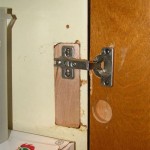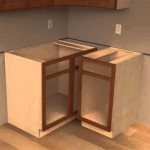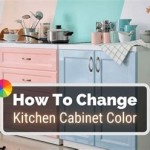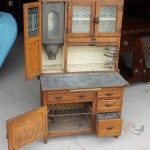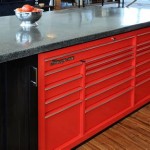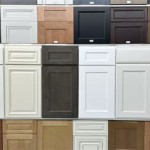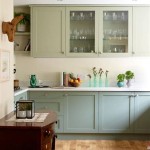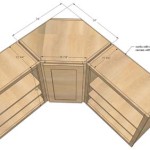Rotating Shelves in Kitchen Cabinets: Maximizing Space and Accessibility
Kitchen cabinets are fundamental to kitchen organization, providing essential storage for cookware, food items, and other kitchen necessities. However, traditional cabinet designs can often lead to inefficient use of space, particularly in corners and hard-to-reach areas. Rotating shelves, also known as lazy Susans, offer a practical solution to these challenges, providing enhanced accessibility and maximizing storage capacity within kitchen cabinets.
Rotating shelves are circular platforms that rotate on a central axis. They are installed inside cabinets to allow users to easily access items stored at the back without having to reach or rearrange other objects. This design is particularly beneficial in corner cabinets, where traditional shelving can leave significant dead space. By implementing rotating shelves, homeowners can optimize the use of every available inch within their kitchen cabinets, leading to a more organized and efficient kitchen environment.
The selection of rotating shelves for kitchen cabinets involves consideration of factors such as material, size, shape, weight capacity, and installation requirements. This article comprehensively examines the benefits, types, selection criteria, and installation considerations associated with incorporating rotating shelves into kitchen cabinet designs.
Benefits of Rotating Shelves
The utilization of rotating shelves in kitchen cabinets offers several distinct advantages that contribute to improved kitchen functionality and organization. These advantages include enhanced accessibility, optimized space utilization, and increased organization.
Enhanced Accessibility: One of the primary benefits of rotating shelves is the improved accessibility they provide to items stored within cabinets. Traditional cabinet designs often require users to reach deep into the cabinet to retrieve items at the back, potentially dislodging or knocking over other items in the process. Rotating shelves eliminate this problem by allowing users to simply rotate the shelf until the desired item is within easy reach. This is particularly valuable for storing frequently used items, such as spices, canned goods, or cookware.
This ease of access is especially beneficial for individuals with mobility limitations, such as those with arthritis or back pain. The ability to access items without excessive reaching or bending can significantly improve comfort and convenience in the kitchen. Furthermore, rotating shelves can reduce the risk of accidents caused by straining to reach for items in awkward positions.
Optimized Space Utilization: Rotating shelves are particularly effective in maximizing the use of space in corner cabinets. Corner cabinets are often awkwardly shaped and difficult to access, leading to significant dead space that is not effectively utilized. Traditional shelving in corner cabinets often leaves a large, unusable area at the back, making it challenging to store and retrieve items. Rotating shelves address this issue by providing a rotating platform that allows users to easily access items stored in the back corners of the cabinet. This ensures that every inch of space is used efficiently, maximizing storage capacity.
Beyond corner cabinets, rotating shelves can also be used in standard base cabinets and pantry cabinets to optimize space utilization. By allowing users to easily access items at the back of the cabinet, rotating shelves reduce the need to store items in a single layer, thereby increasing the overall storage capacity of the cabinet. This is especially valuable in smaller kitchens where space is at a premium.
Increased Organization: The implementation of rotating shelves can contribute to a more organized kitchen environment. By providing easy access to items, rotating shelves encourage users to keep their cabinets neat and tidy. Items are less likely to be forgotten or lost at the back of the cabinet, and users are more likely to put items back in their designated spots after use. This leads to a more streamlined and efficient kitchen workflow.
Furthermore, rotating shelves can be used to organize items by category or frequency of use. For example, spices can be stored on a rotating shelf near the cooktop, while baking supplies can be stored on a rotating shelf in the pantry. This allows users to quickly and easily find the items they need, saving time and effort in the kitchen.
Types of Rotating Shelves
Rotating shelves are available in a variety of designs and materials to suit different cabinet configurations and storage needs. The following are some of the most common types of rotating shelves used in kitchen cabinets:
Full-Circle Rotating Shelves: Full-circle rotating shelves are circular platforms that rotate 360 degrees. They are typically used in corner cabinets with a pie-cut or angled design. These shelves provide maximum accessibility to all items stored within the cabinet, making them ideal for storing a wide range of kitchen essentials.
Full-circle rotating shelves are available in a variety of materials, including plastic, wood, and metal. Plastic shelves are typically the most affordable option, while wood and metal shelves offer greater durability and aesthetic appeal. The choice of material will depend on the individual's budget and design preferences.
Half-Moon Rotating Shelves: Half-moon rotating shelves are semi-circular platforms that rotate 180 degrees. They are typically used in blind corner cabinets, where one cabinet is adjacent to another, creating a hidden corner space. Half-moon shelves allow users to easily access items stored in the blind corner without having to reach or rearrange other items.
Half-moon rotating shelves often incorporate a mechanism that allows the shelf to slide out of the cabinet for even greater accessibility. This feature is particularly useful for storing heavy or bulky items. Like full-circle shelves, half-moon shelves are available in a variety of materials.
Pie-Cut Rotating Shelves: Pie-cut rotating shelves are designed specifically for corner cabinets with a pie-cut design. These shelves have a wedge-shaped profile that fits snugly into the corner of the cabinet. Pie-cut shelves rotate 360 degrees, providing easy access to all items stored within the corner space.
Pie-cut rotating shelves are often constructed from wood or metal to provide greater stability and weight capacity. They are available in a variety of sizes to accommodate different cabinet dimensions. The installation of pie-cut rotating shelves typically requires some degree of customization to ensure a proper fit.
Kidney-Shaped Rotating Shelves: Kidney-shaped rotating shelves are another option for corner cabinets. These shelves have a curved, kidney-shaped profile that maximizes storage capacity while allowing for easy access. Kidney-shaped shelves rotate 360 degrees, providing full access to all items stored within the cabinet.
Kidney-shaped rotating shelves are often made from durable materials such as wood or high-density polyethylene (HDPE). They are available in a range of sizes and styles to complement different kitchen designs. The unique shape of these shelves can be particularly effective for storing oddly shaped items.
Factors to Consider When Selecting Rotating Shelves
The selection of appropriate rotating shelves for kitchen cabinets requires careful consideration of several factors to ensure that the chosen shelves meet the specific needs and requirements of the kitchen. These factors include cabinet dimensions, weight capacity, material, and ease of installation.
Cabinet Dimensions: The first and most important factor to consider when selecting rotating shelves is the dimensions of the cabinets in which they will be installed. It is essential to accurately measure the interior dimensions of the cabinet, including the width, depth, and height, to ensure that the chosen shelves will fit properly. Pay close attention to the diameter of the rotating shelf, as this will determine how much space it will occupy within the cabinet.
Consider also the clearance required for the rotating mechanism to operate smoothly. Ensure that there is sufficient space between the rotating shelf and the cabinet walls to prevent any obstruction or binding. It is generally advisable to choose shelves that are slightly smaller than the available space to allow for some margin of error.
Weight Capacity: The weight capacity of the rotating shelves is another crucial factor to consider, particularly if you plan to store heavy items such as pots, pans, or canned goods. Ensure that the chosen shelves are capable of supporting the weight of the items you intend to store on them. Exceeding the weight capacity of the shelves can lead to damage or even collapse, potentially causing injury or damage to other items in the cabinet.
Weight capacity is typically specified by the manufacturer of the rotating shelves. Pay close attention to this specification and choose shelves that have a weight capacity that is greater than the expected weight of the items you will be storing. It is always better to err on the side of caution and choose shelves with a higher weight capacity than you think you need.
Material: Rotating shelves are available in a variety of materials, including plastic, wood, and metal. Each material has its own advantages and disadvantages in terms of durability, aesthetics, and cost. Plastic shelves are typically the most affordable option, but they may not be as durable or aesthetically pleasing as wood or metal shelves. Wood shelves offer a classic and elegant look, but they can be more expensive and may require more maintenance. Metal shelves are durable and easy to clean, but they may not be suitable for all kitchen designs.
The choice of material will depend on your individual preferences and budget. Consider the overall style of your kitchen and choose shelves that complement the existing decor. If you are concerned about durability, choose shelves made from a strong and durable material such as wood or metal. If you are on a tight budget, plastic shelves may be a more practical option.
Ease of Installation: The ease of installation is an important consideration, especially if you plan to install the rotating shelves yourself. Some rotating shelves come pre-assembled, while others require some assembly. Choose shelves that are easy to assemble and install, and make sure that the necessary hardware and instructions are included.
If you are not comfortable installing the rotating shelves yourself, you may want to consider hiring a professional installer. While this will add to the overall cost, it will ensure that the shelves are installed correctly and safely. Before hiring an installer, be sure to get a quote and check their references.

Corner Cabinet With Pull Out Rotating Pot And Pan Shelves Space Saving Kitchen Custom Kitchens Transitional

Rotating Pantry Shelves Design Ideas

Pin On Mermaid Room

Giamo Kitchen Storage 270 Revolving Corner Solid Base Shelves Fit

Kitchen Space Organizers Swivel Carousels

Revolving Pantry Design Ideas

Kitchen Space Organizers Rotating Pantry Unit

10 Smart Kitchen Storage Solutions Woodmaster Kitchens

Stainless Steel Wooden Kitchen Corner Rotating Shelf 2

2 Layer Metal 180 Degree Kitchen Cabinet Rotating Rolling Storage Pull Out Basket Shelf Rack China And Made In Com
Related Posts

